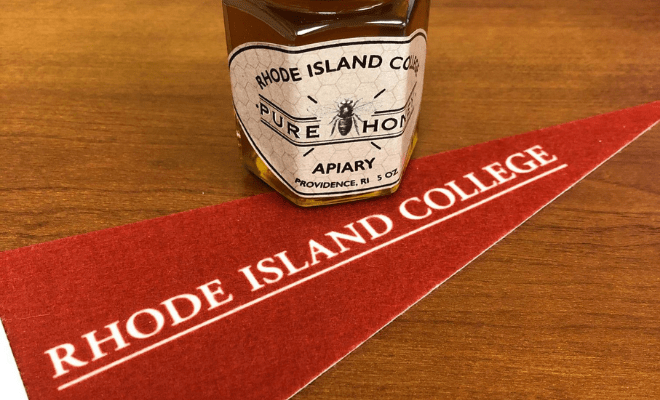
Honey Recipes
Try out our exclusive and delicious recipes, prepared with RIC honey, created by Rhode Island College Executive Chef.
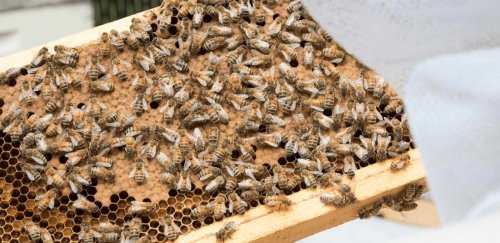
The Rhode Island College Bee Education Center Fund has been established to provide funds for any expenses relating to bee education such as supplies, student stipends, research and instruction.
Our hives house about 40-50,000 bees each. With six hives across campus, the bees serve to pollinate local plant life and the produce grown in our community garden. The garden previously produced about 500 pounds of produce per year, a number that has doubled since the addition of beehives to the garden. We also collect about 200 pounds of honey each year!
Honeybees are social insects and live together in hives which may contain thousands of bees. A honey bee hive is like a complex society. Each individual has a job and together the bees all contribute so that the hive thrives. Each hive at RIC contains 40-50,000 bees. Within the hives, each bee works as part of a team to keep the hive functioning. The biology of honey bees relates to their behavior. Honey bees are classified as either worker bees, drones, or queens.
Worker bees are females and help keep the hive in production. There will be thousands of workers and they hold many jobs. Worker bees care for the young, developing bees called larvae, and the queen bee. Worker bees also build hexagonal cells for the eggs and larvae, supply the hive with nectar, keep the hive clean, as well as cool in summer and warm in winter. As worker bees explore outside the hive, they collect nectar and pollen, water, and plant sap called propolis. These materials will be used for food resources and to fix damages in the hive.
Within each hive there will be only a few hundred males called drones. Drone bees have one job: to mate with a queen bee. Directly after mating the drone will die. While waiting to mate, the drones will live in the hives and be taken care of by the worker bees. Although drones are larger than the female workers, they must rely on them for protection because drones lack stingers.
A hive will have a single queen bee who lays all the eggs in the hive. She is larger than the rest of the workers and drones and is selected as the queen by being fed a special food, called royal jelly, when she is a developing larva. Her job is to lay eggs, up to 1,500 per day, and go off to find drones to mate with. She will travel far outside the hive to reduce chances of mating with a drone from her own hive. This helps prevent poorly developed bees from being born and damaging the system. She will typically live for two years. After her death, a new queen is chosen. In hives, the queen will be marked with paint to keep track of her whereabouts.
Buzz, our resident Bee expert, leads tours of our Bee Education Center, RIC Greenhouse and Community Garden. We invite individuals or groups to join us for an enriching, hands-on tour of the college’s green initiatives. Age appropriate sessions can be customized to suit your needs. Buzz is here to educate kids of all ages, with customized field trips suitable to their specific age groups.
| Preschool - 3rd Grade | 4th - 8th Grade | 9th - 12th Grade |
|---|---|---|
| Learn about types of bees, roles of each bee in the hive, beekeeping tools and how keeps help Earth! | Learn about the roles of bees as pollinators, how pheromones are used for communication and the waggle dance! | Learn about neonicotinoids and their effects on hives and agriculture, pollination and its use in our culture. |
Each field trip should also schedule a rain date scheduled as all field trips are dependent on weather.
Anthropology professor Dr. Carolyn Fluehr-Lobban visited University of California- Davis campus bee research facility. She was intrigued with the use of honeybees on campus and wanted to start a program for Rhode Island College, focusing on honeybee research and bee education.

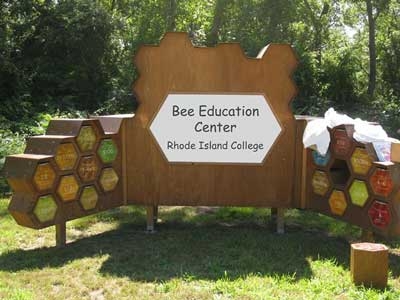
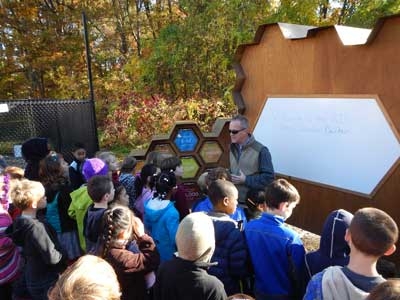
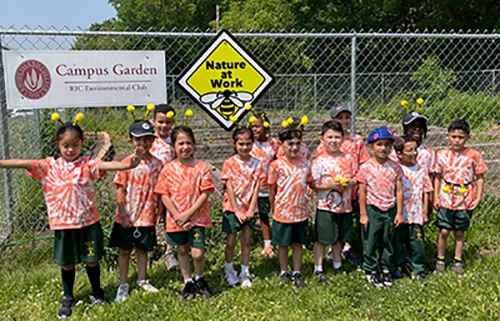
Students will have an enriching hands on experience at the hives alongside our beekeeper as he educates all age groups about our bees at RIC. Field trips can be customized in subject and time frame to include visits to the Bee Education Center, the RIC Greenhouse and campus garden!

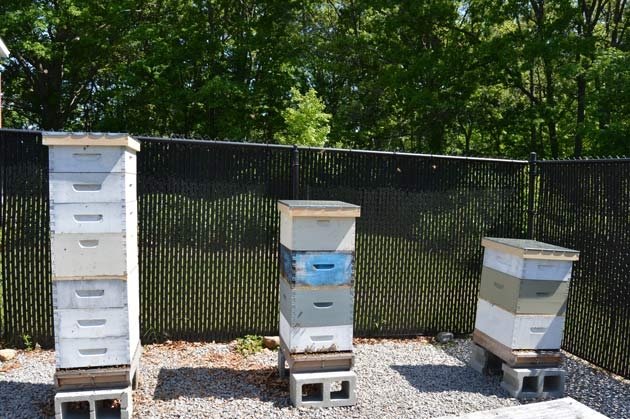
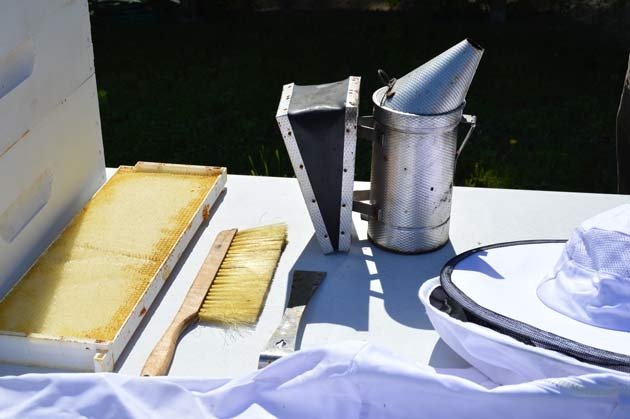
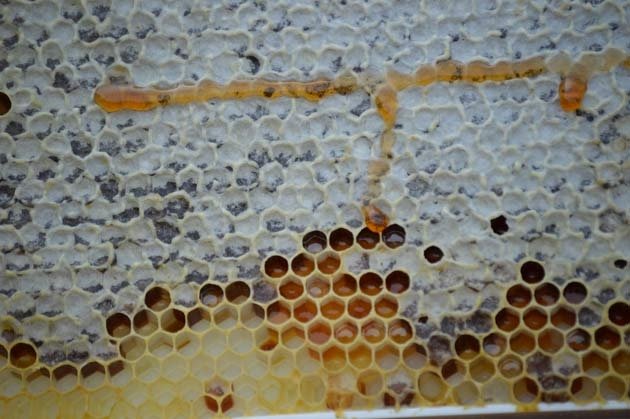
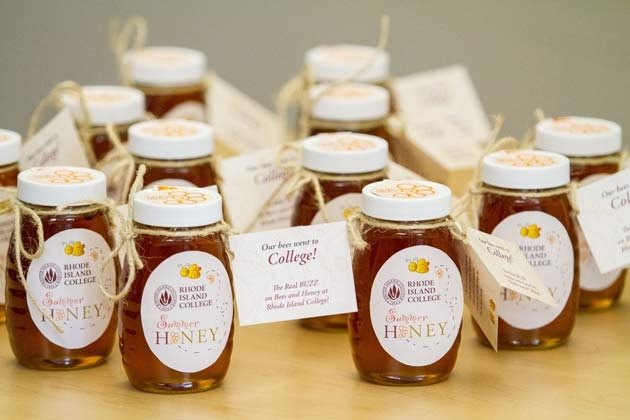

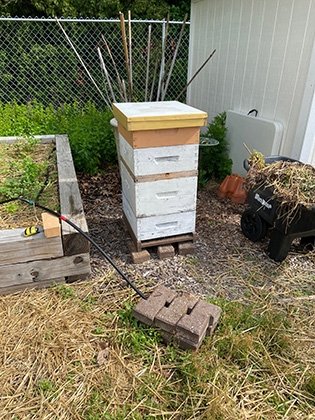
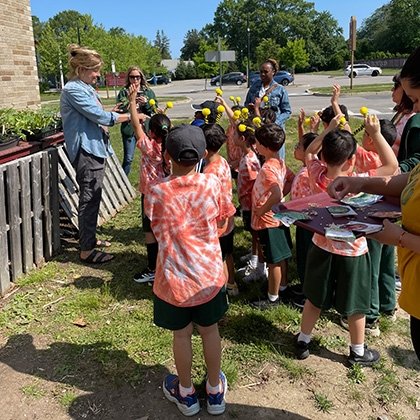
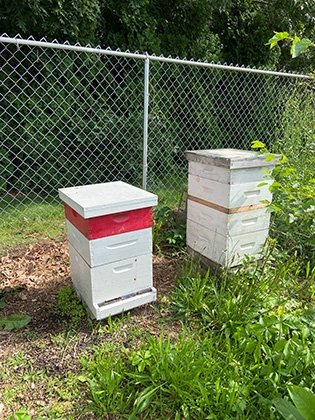
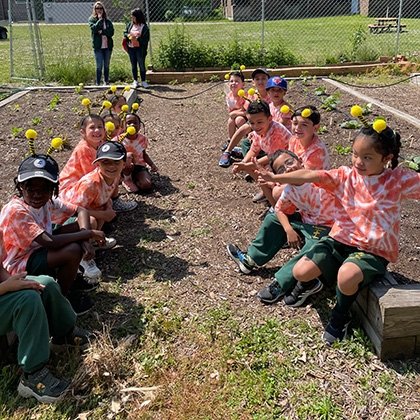
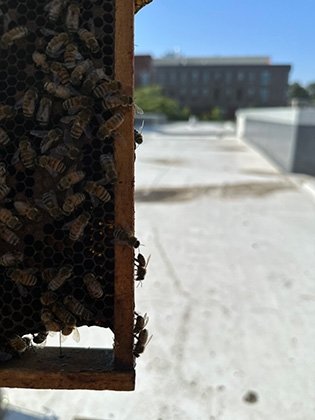

Try out our exclusive and delicious recipes, prepared with RIC honey, created by Rhode Island College Executive Chef.
Bees use a process called chemical signaling to communicate to each other in the hive. They diffuse molecules into the air, called pheromones, and can understand their meaning. Bees also communicate through one another using behaviors such as a ‘waggle’ dance pattern to communicate the location of pollen. Besides using pollen to make their own honey for food, when bees fly from flower to flower they also have another important role in nature: pollination. As they land on each flower they will become covered in pollen, a yellow dust that helps germinate other plants.
Bees are designated to be pollinators and have pollen cling to their bodies and transferred onto other flowers they land on. Their legs have long hairs that pollen can stick to, as well as "pollen sacs" on their sides that collect large quantities of pollen and stay piled up on their sides.
Bees help pollinate many of these RI fruits and vegetables:
Plants to attract bees in your garden:
| January | February | March/April | May/June | July |
|---|---|---|---|---|
| The bees huddle together in the hive to surround the queen and keep warm during the winter. | The queen will begin to lay her eggs. | If warm enough, the bees will start to fly out in search of food. | Workers collect pollen and nectar from flowers to make into honey and the queen will begin mating with drones from around the area. | Honey can start being collected from the hives. RIC will usually collect a total of 200 pounds of honey between the six hives.. |
| August | September | October | November | December |
|---|---|---|---|---|
| Worker bees will restore any damage to the hives, using propolis "bee glue" to fill any cracks. | Drones are pushed out of the hives because their job is complete. | Workers travel for the last few gatherings of nectar before hibernation. | Queen stops laying eggs. | Bees will hibernate over winter, huddling close and eating the honey they have stored over the year. |
Although honey bees have garnered much of the press, native bee populations and other pollinators such as butterflies are also declining. These species are vitally important within local ecosystems. Colony Collapse Disorder (CCD) is a major cause of honey bee losses and occurs when adult bees flee the hive leaving the Queen and developing bee brood behind. Without worker bees, the hive is doomed. A number of factors likely contribute to CCD and the decline of bee populations in general.
As an insect, honey bees are quite sensitive to most classes of insecticides. Even low doses of these compounds can adversely affect foraging honey bees and therefore the hive itself. Recently, a relatively new class of compounds called the neonicotinoids were banned in Europe due to their detrimental effects on bee populations.
As open spaces (meadows, fields, and wetlands) are lost or fragmented due to human activities, bees must travel further to forage for pollen and nectar, therefore making it harder to sustain the hive. Successful foraging is particularly critical in the fall when bees need to build-up food stores to sustain the hive through the winter. It is now common for about 50% of all honey hives to be lost during the winter months.
Viruses, bacteria, fungi and even other insects can kill bees. The list of bee pathogens is long and growing as we learn more about bee biology. Some of these threats are relatively recent. For instance, Varroa mites (Varroa destructor) are native to Asia but in the 1940’s, were seen in honey bee hives in Africa and Europe. Since this time, Varroa mites have traveled nearly world-wide and are a major threat to bee populations. Even more recently, the Small Hive Beetle (SHB) began infesting honey bee hives in Europe and the Americas. The SHB first appeared in the US in the late 1990’s. This beetle is native to sub-Saharan Africa and thrives in warmer climates. However, SHBs have quickly adapted to colder US environments and can be seen in most states in the North East. Many of these bee pathogens move with bee populations. Because bees are so important for agriculture, bee hives are often transported to fertilize crops. Bees are also transported through the mail as a ‘packet’. The transport of bees facilitates the movement of bee pathogens.
A comb is removed from the hive carefully by a beekeeper. The comb is scraped with the heat knife to remove the whitish seal that the bees layered over the honey.
This will open the cells up to allow the honey to be taken out. A special machine, called an extractor, is used to pull the honey from each of the honey comb cells. Once it is released, the honey will be strained through a screen to be sifted and collect.
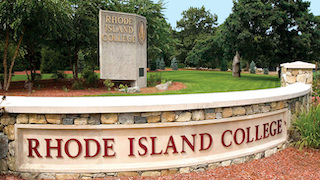

Assistant Director of Facilities & Ops/Sustainability & Logistics